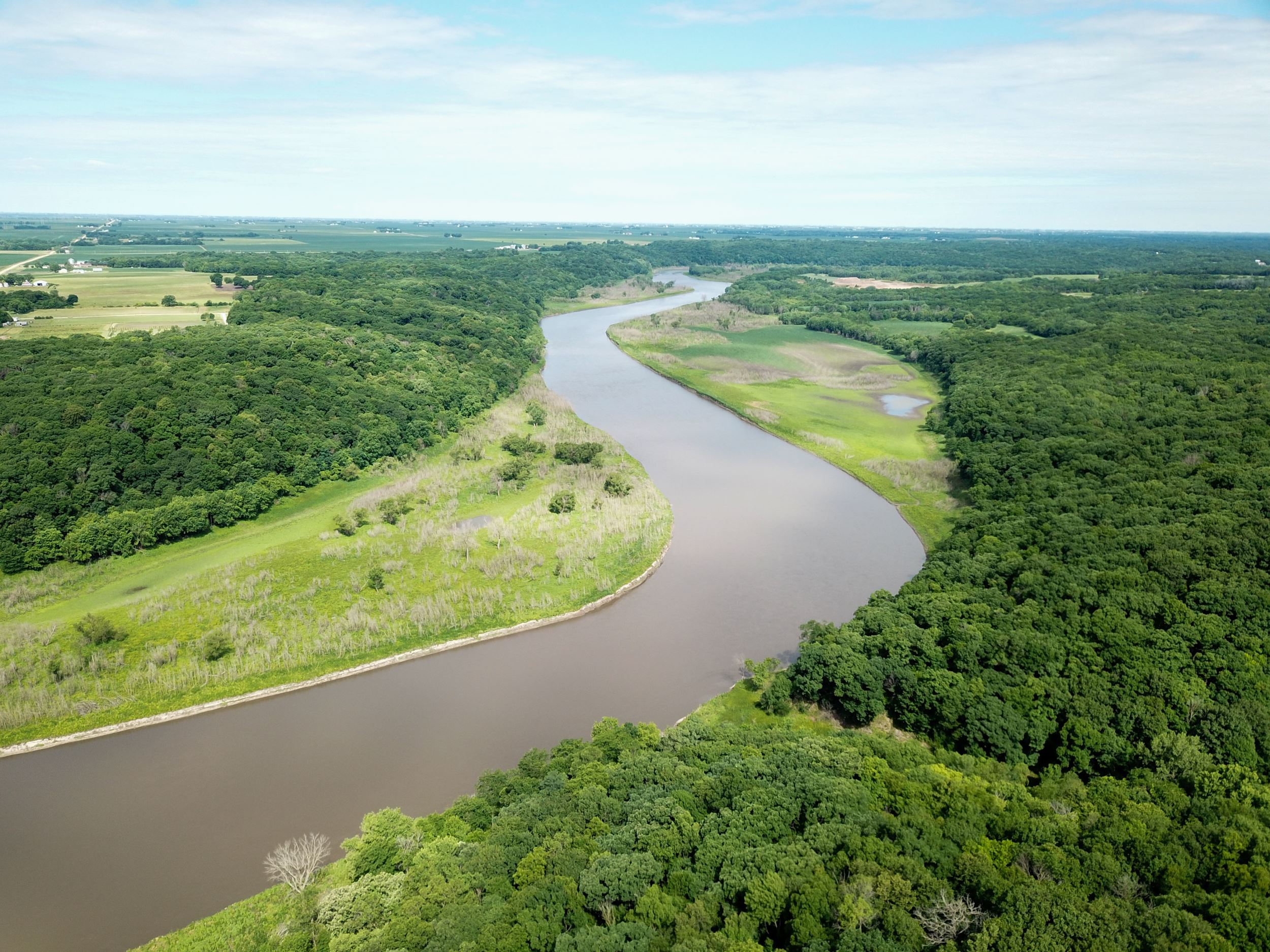Forever Young
By Joe Jayjack on August 25, 2021 in Blog

When David and Terrie Hoefer worked at the central Iowa 4-H camp in the 1980s and ‘90s, they formed a deep connection to this place along the Des Moines River in Boone County.
The Hoefers are part of a large group of 4-H camp staff alumni that helped campers learn about the natural world and their place in it. In the process of helping kids connect to the land, many staff developed a close connection to this place – and each other – that has endured, even decades after they stopped working there.
That is why the Hoefers and many other alumni were happy when Iowa Natural Heritage Foundation (INHF) purchased the camp to protect and keep whole this natural wonder.
“There is no greater honor to the work we did at the 4-H Camp than to preserve this land,” David and Terrie wrote to INHF.
A new trail
The camp, first known as the Iowa 4-H Center and more recently as Clover Woods Camp and Retreat Center, was split into 12 parcels and offered for sale by the Iowa 4-H Foundation in the fall of 2019, citing declining attendance and a desire to support other 4-H programs around the state.
Many worried about what these 1,011 acres would look if they were divided and developed. The steep woodland hills, wildflower-lined hiking trails and native prairie have long-been a refuge for people and wildlife alike. With this in mind, INHF made an offer on the entire camp, which was accepted by the Iowa 4-H Foundation. INHF took possession of the property in early 2020.
As soon as INHF took possession of the property, the organization began envisioning the future of this outstanding natural wonder with public and private partners. A shared commitment to continue to share it with others became evident early on.
That wish – shared by INHF, its partners and countless project supporters – is now coming to fruition. Part of the camp transferred to the Iowa DNR in June 2021 and will soon be open to the public.
“We’re envisioning a more welcoming wildlife area,” said Todd Bishop, the Iowa DNR wildlife bureau chief. “We understand that our traditional wildlife areas, if you don’t hunt or fish, a lot of people feel like they don’t know how to use the area. What’s great about this area is we have a lot of partners between the Iowa Arboretum, nearby parks and camps and INHF. It gives us a chance to build a partnership through programming and coordination.”
This summer, INHF transferred the first 200-acre section to the Iowa DNR. The two organizations continue to work together on the future of the rest of the property, which will likely include INHF owning a section in the northeast corner long-term for its own programming, stewardship and public engagement. The portions owned by the DNR will be managed as a wildlife area — technically part of the Saylorville Wildlife Management Area (WMA) — but with an emphasis on expanded programming, especially for young people.
“I feel like that’s a consistent legacy with the 4-H camp, helping young people connect with the land,” Bishop said. “We are very serious in our intent to try to make this more welcoming to users throughout the year. And we’re trying not to pre-determine what that means. We’re trying to do it in a way that is responsive to new interests, new ways of interacting with natural landscapes.”
Less is more
Bishop said he sees the place as a day-use area where nearby campers or park users could come for a more secluded experience. The property already has an extensive system of hiking trails — something many WMAs don’t’ offer — that could be augmented by minimal interpretation, possibly even through mobile devices.
“Ledges — what a great place. But it’s crowded. And that’s what it’s built for,” Bishop said. “What we’re trying to accomplish here is a little less density. The experience is different when there is some solitude.”
That experience won’t include shelters, cabins or camping, a decision solidified, in-part, by nature. Last summer’s derecho hit the former camp hard. The storm toppled many mature trees and damaged most of the buildings that supported the former camp. INHF had already began moving or salvaging derelict buildings, but the storm damage solidified the decision to remove most the built infrastructure on the site and create a more natural experience. INHF continues to work with nearby nonprofits and conservation groups to move or salvage materials, giving them new life elsewhere.
“This is such a special place, not only because of its size and scenery, but because it has brought so many people closer to nature,” said Heather Jobst, INHF senior land conservation director. “We’re happy to be able to bring more people to this place with the help of great partners.”
INHF is tentatively planning an open house and raptor release with Saving Our Avian Resources (SOAR) on the site for Oct. 3, 2021. The sections that have already transferred to the DNR should soon be open to the public, paving the way for new generations to connect with this place.
“We all stand on the shoulders of those who came before us. This place that holds a special place in our hearts is no different,” the Hoefers wrote. “It is our wish for this land that has given us so much to keep teaching and touching people’s souls, motivating them to act every day to care for the land, the life and the air in all that they do. Not only for us, but for all who work from our shoulders.”